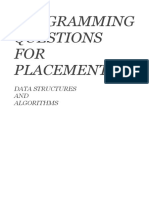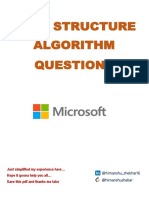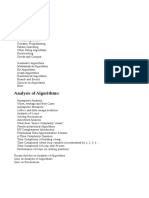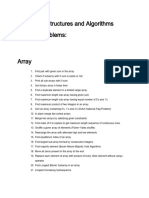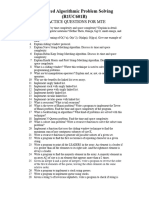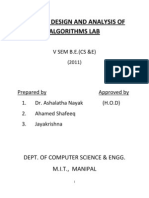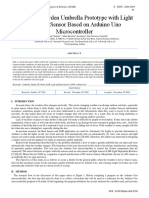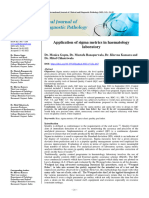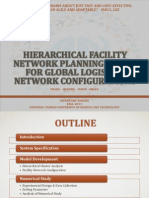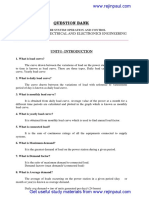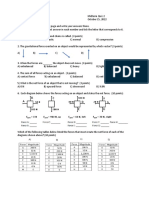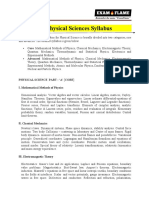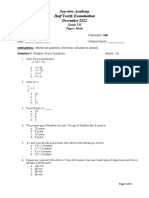0% found this document useful (0 votes)
18 views6 pagesMost Asked Question (Coding)
The document provides a comprehensive list of 10 questions for each of the common topics encountered in the TCS NQT exam, including Arrays, Strings, Linked Lists, Dynamic Programming, Sorting and Searching, Mathematical Problems, Greedy Algorithms, Trees, Graph Algorithms, and Bit Manipulation. Each topic contains a variety of problems designed to test different programming and algorithmic skills. This structured approach helps candidates prepare effectively for the exam.
Uploaded by
Mr XCopyright
© © All Rights Reserved
We take content rights seriously. If you suspect this is your content, claim it here.
Available Formats
Download as PDF, TXT or read online on Scribd
0% found this document useful (0 votes)
18 views6 pagesMost Asked Question (Coding)
The document provides a comprehensive list of 10 questions for each of the common topics encountered in the TCS NQT exam, including Arrays, Strings, Linked Lists, Dynamic Programming, Sorting and Searching, Mathematical Problems, Greedy Algorithms, Trees, Graph Algorithms, and Bit Manipulation. Each topic contains a variety of problems designed to test different programming and algorithmic skills. This structured approach helps candidates prepare effectively for the exam.
Uploaded by
Mr XCopyright
© © All Rights Reserved
We take content rights seriously. If you suspect this is your content, claim it here.
Available Formats
Download as PDF, TXT or read online on Scribd
/ 6




